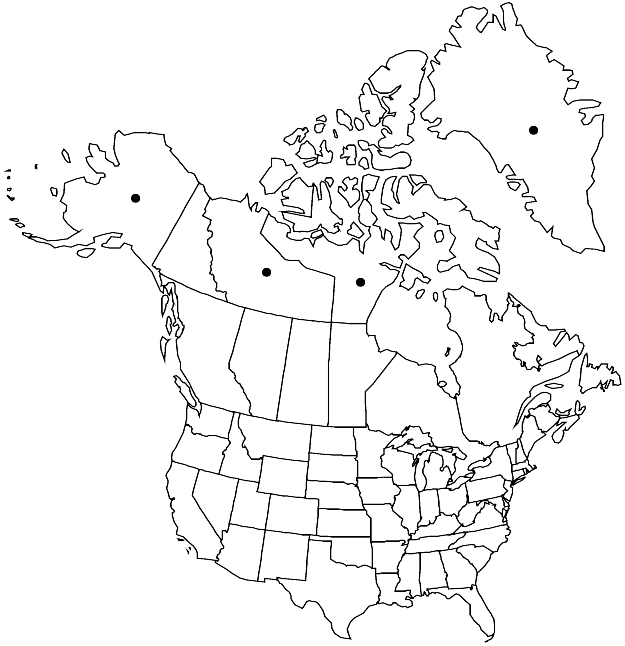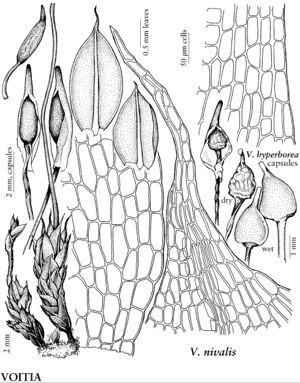Voitia hyperborea
Tent. Meth. Musc., 41, plate 7, figs. 19 – 22. 1822.
Plants 2–5 cm. Leaves lanceolate. Seta not twisted near capsule. Capsule ovate-globose, symmetric, very abruptly narrowed to seta, basal ridge present, definite, irregularly but strongly wrinkled, pustulose, or ridged. Calyptra split from base nearly to tip on expansion of capsule, remaining on capsule, base hyaline. Spores 10–18 µm.
Phenology: Capsules mature fall.
Habitat: Coprophilic
Elevation: low to high elevations
Distribution

Greenland, N.W.T., Nunavut, Alaska, n Eurasia.
Discussion
Plants of Voitia hyperborea are deeper and thicker than those of V. nivalis, and the leaf apices are narrower, with longer acumina. The principal difference between V. hyperborea and V. nivalis is in the capsule shape, ovate-globose in V. hyperborea and oblong-ovate in V. nivalis. The base of the capsule in V. hyperborea is abruptly narrowed to the seta, forming a definite ridge along the base. In V. nivalis, the more elongate capsule narrows gradually to the seta without any ridge formation. Both species grow on herbivore droppings and, because the capsules are cleistocarpous, it is unclear how they are dispersed. W. C. Steere (1974) suggested that spore dispersal to fresh dung may occur when the sporophytes are ingested by caribou or muskoxen, and the spores subsequently dropped by them at some other location. The species do not generally have overlapping distributions. Voitia hyperborea is mainly Arctic in distribution; V. nivalis has a more southerly distribution and, in North America, is mainly a species of the Rocky Mountains.
